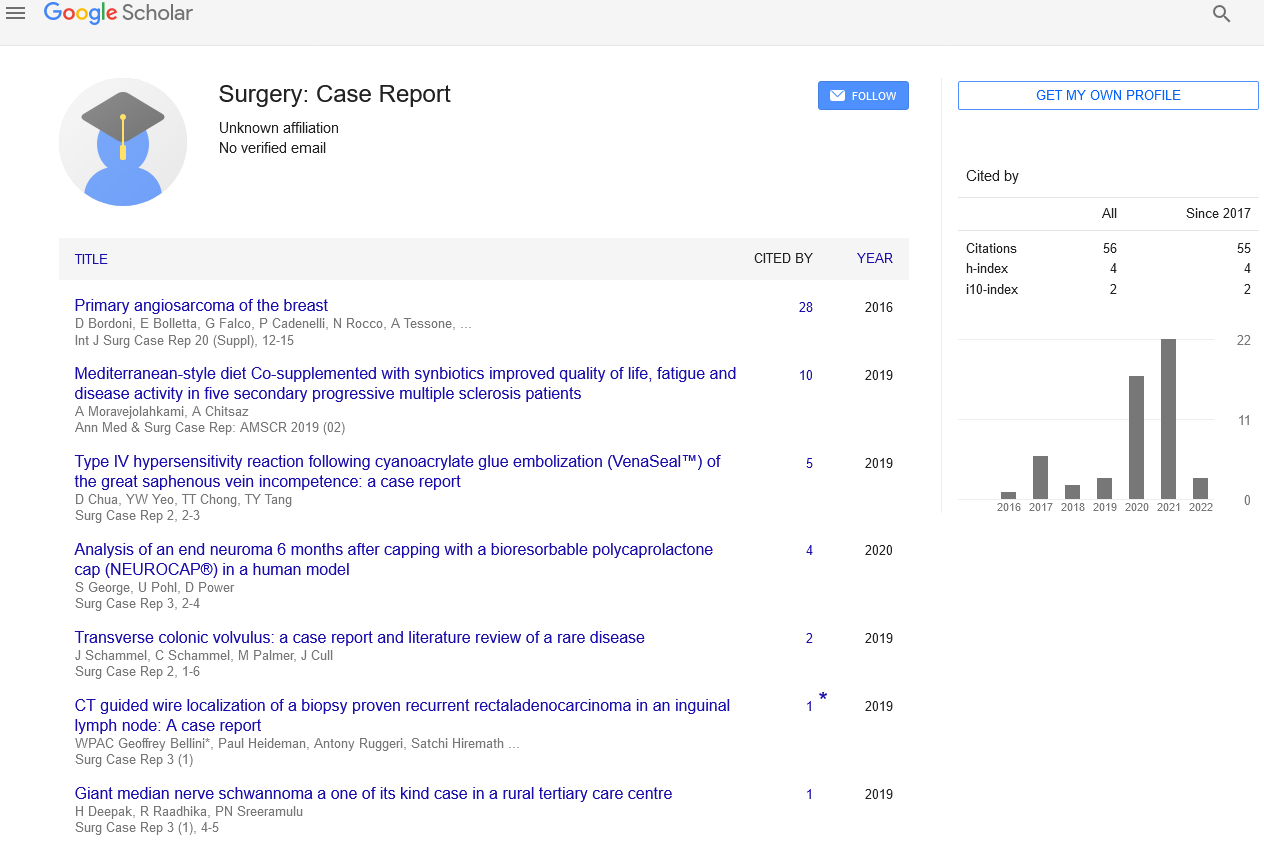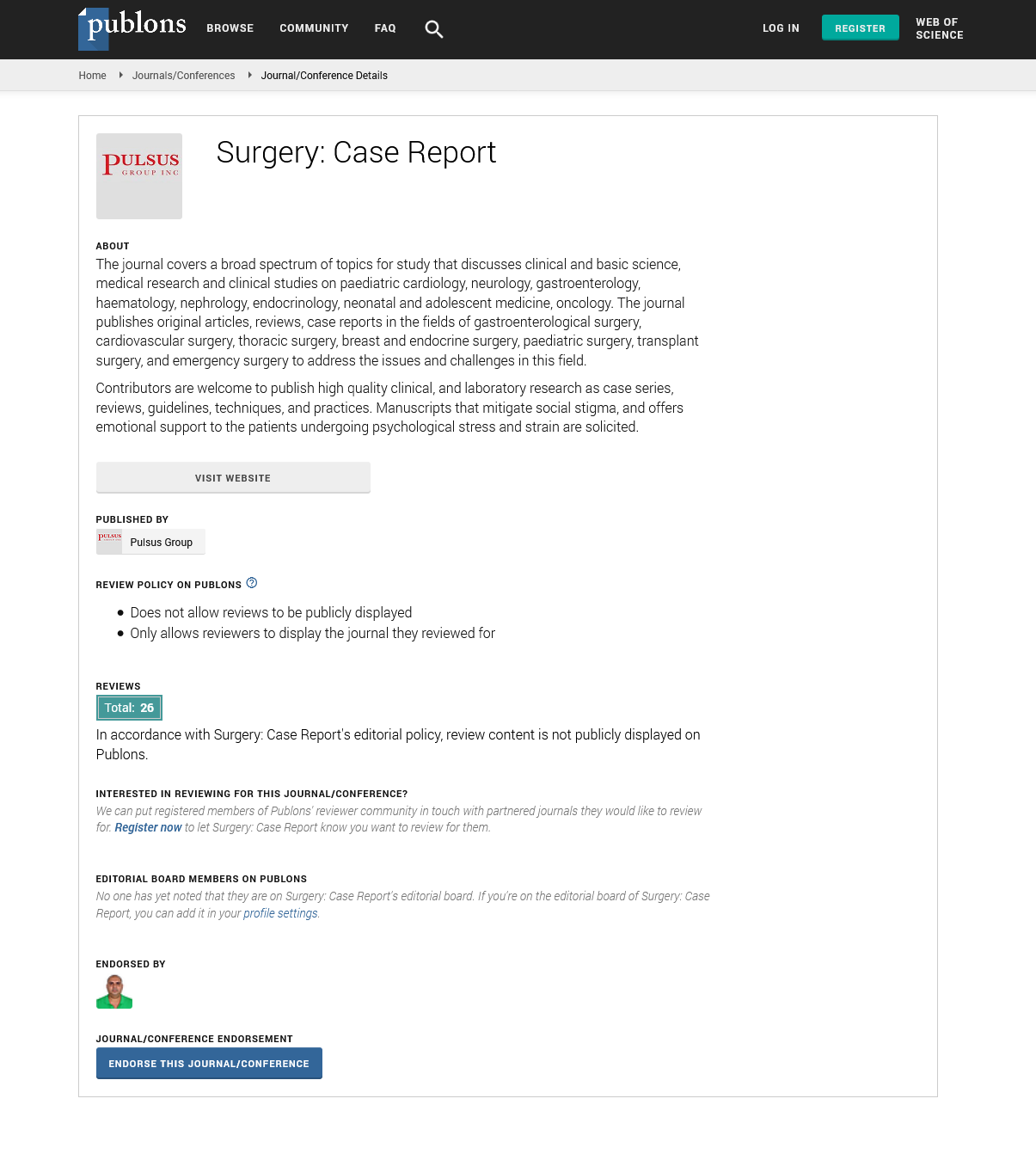The modernism in surgery
Received: 24-Jul-2017 Accepted Date: Jul 27, 2017; Published: 31-Jul-2017
Citation: Sorin C. The modernism in surgery. Surg Case Rep 2017;1(1):1.
This open-access article is distributed under the terms of the Creative Commons Attribution Non-Commercial License (CC BY-NC) (http://creativecommons.org/licenses/by-nc/4.0/), which permits reuse, distribution and reproduction of the article, provided that the original work is properly cited and the reuse is restricted to noncommercial purposes. For commercial reuse, contact reprints@pulsus.com
The surgery is a very dynamic science and the surgical attitudes and the principles are slowly changing in the light of the continuous research activity and new studies results but is also correlated with the experience achieved by the surgeons during the years of activity. Patients with a previous ACS have a high risk of developing adverse cardiac events during the first year following the acute episode. Thus, adequate risk stratification is of crucial importance for a patient-tailored treatment.
More than ever the progress of the surgery implicates more and more all kind of gadgets and the high level surgery, no matter if is digestive, cardiac or any kind or surgery is very dependent of the technology. And this is only the beginning.
The psychological and nutritional support of the patients is very important because after the patient leaves the hospital a good attitude and a correct nutrition will have a good post- treatment result.
This mini-invasive attitude is reflected by the Natural Orifice Translumenal Surgery (NOTES) technique but the indications are restraints and the cosmetic advantage is often inversely proportionated with the intra-operative exposition and instruments manipulation difficulties. The single-port access operations are interesting for the same cosmetic results but once again the technically problems and risks are increasing.
The colo-rectal surgery and especially the rectal surgery had in the latest years a big upgrade by using the help of the robot. The TaTME is the new trend in colo-rectal surgery as the ‘’Wait and see’’ attitude which is in course of evaluation.
The bariatric surgery is in continuous research for the best attitude and surgical technique for each patient, because the psychological factor here is more important that anywhere and the nutritional habits can make the difference between a good and poor result. Is imperative to have a wellprepared multidisciplinary team who will can transform a patient with big psychological and nutritional problems in a compliant patient who can assure a good post-operative result.
The laparoscopic liver resection and the pancreatic resection are more than ever in question but are reserved to the surgeons with advances laparoscopic skills. The vascular control in case of hemorrhage and oncologic limitations make these approaches to be reserved to well selected cases.
The minimal invasive approach is present also in the endocrine surgery with the initially spread of the minimally invasive thyroidectomy (MIT) and couple of years after the endoscopic transaxillary thyroidectomy (ETAT), minimally invasive video-assisted thyroidectomy (MIVAT) and nowadays the procedures of transoral endoscopic thyroidectomy (TOET) and robotic approaches for thyroidectomy.
It must be said that the neo-adjuvant and adjuvant therapy and their complicated lines of treatment are changing and new substances are in test. A successful chemotherapy plan of treatment is very important for the good outcome of the oncological surgery.
The surgery of the future is very promising with the newest advanced in the operatory instruments (staplers, clips, cameras), with the introduction of the new diagnostic procedures like the new 3D advanced visualization techniques in radiology, the utilization of the 3D screens, VR glasses and of course with the new generation of operative robots.
All this technical improvement will have real benefits on the patient’s survival. But the surgeon and his mind remains the key for the best treatment and the relation doctor-patient must remain compassionated… human.






